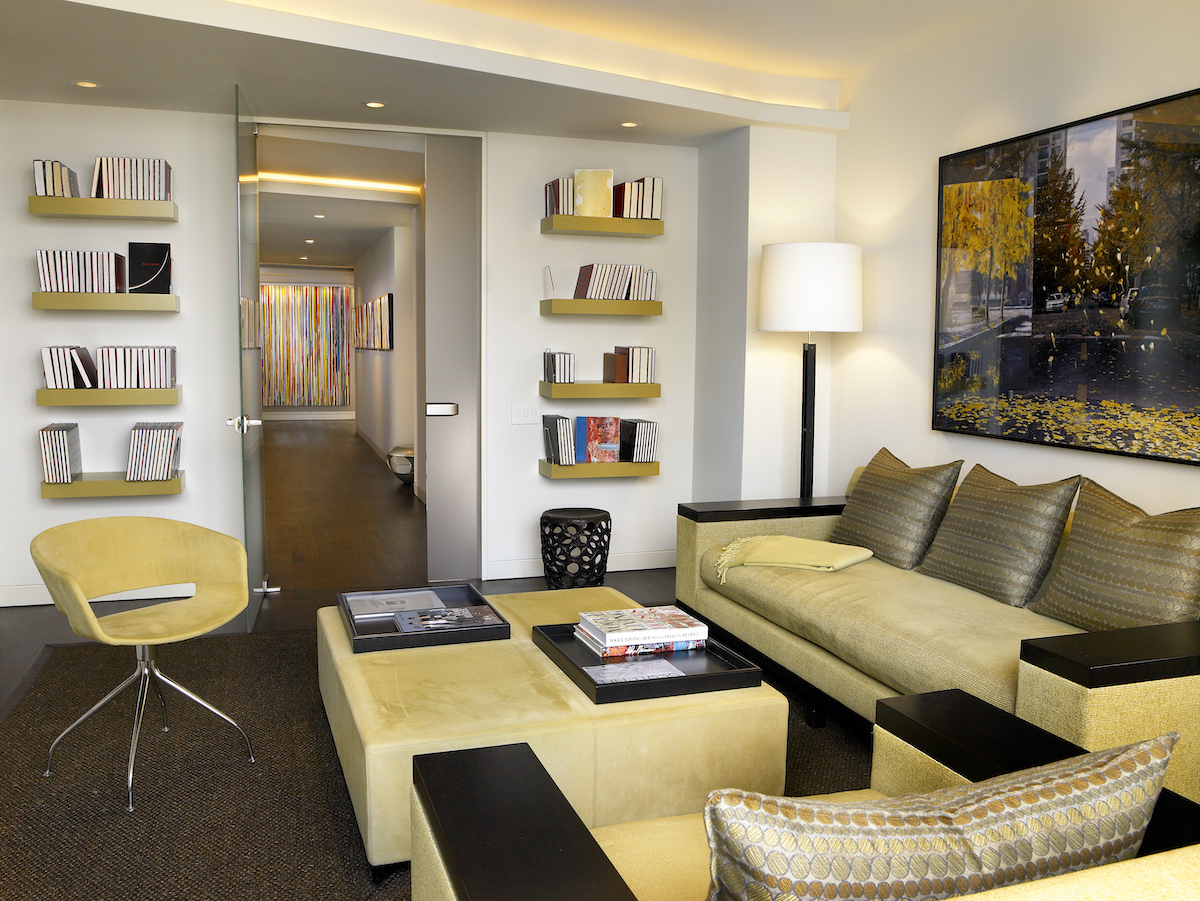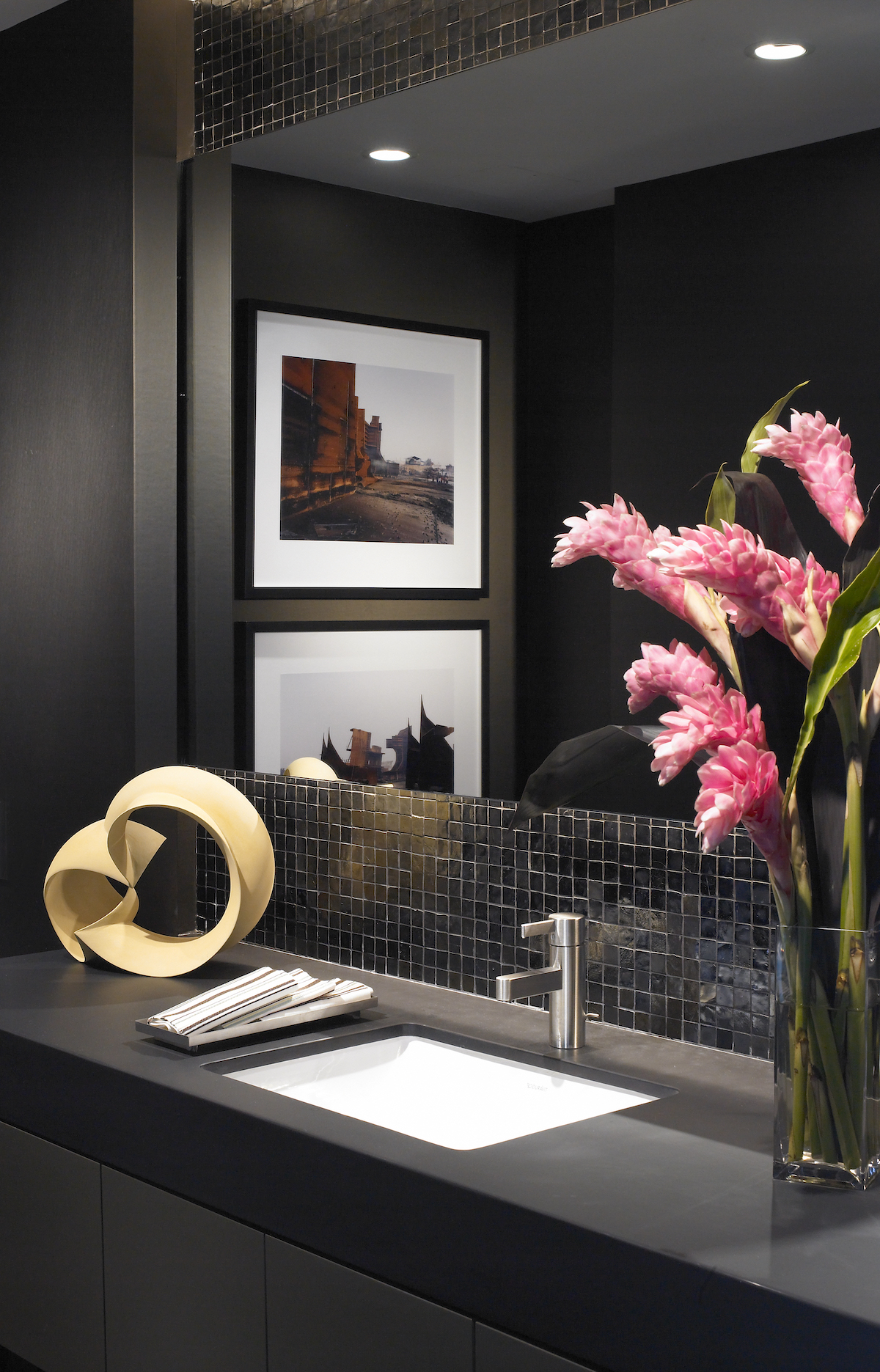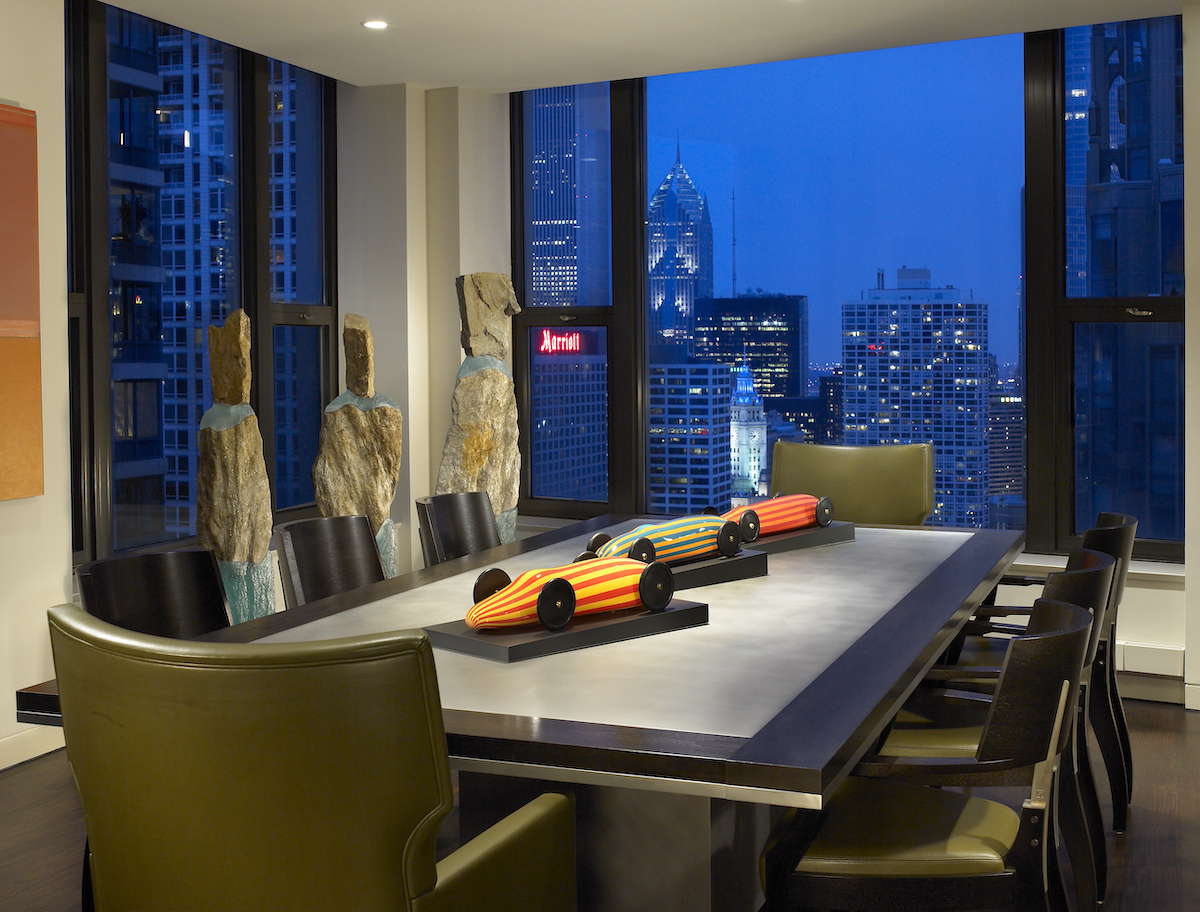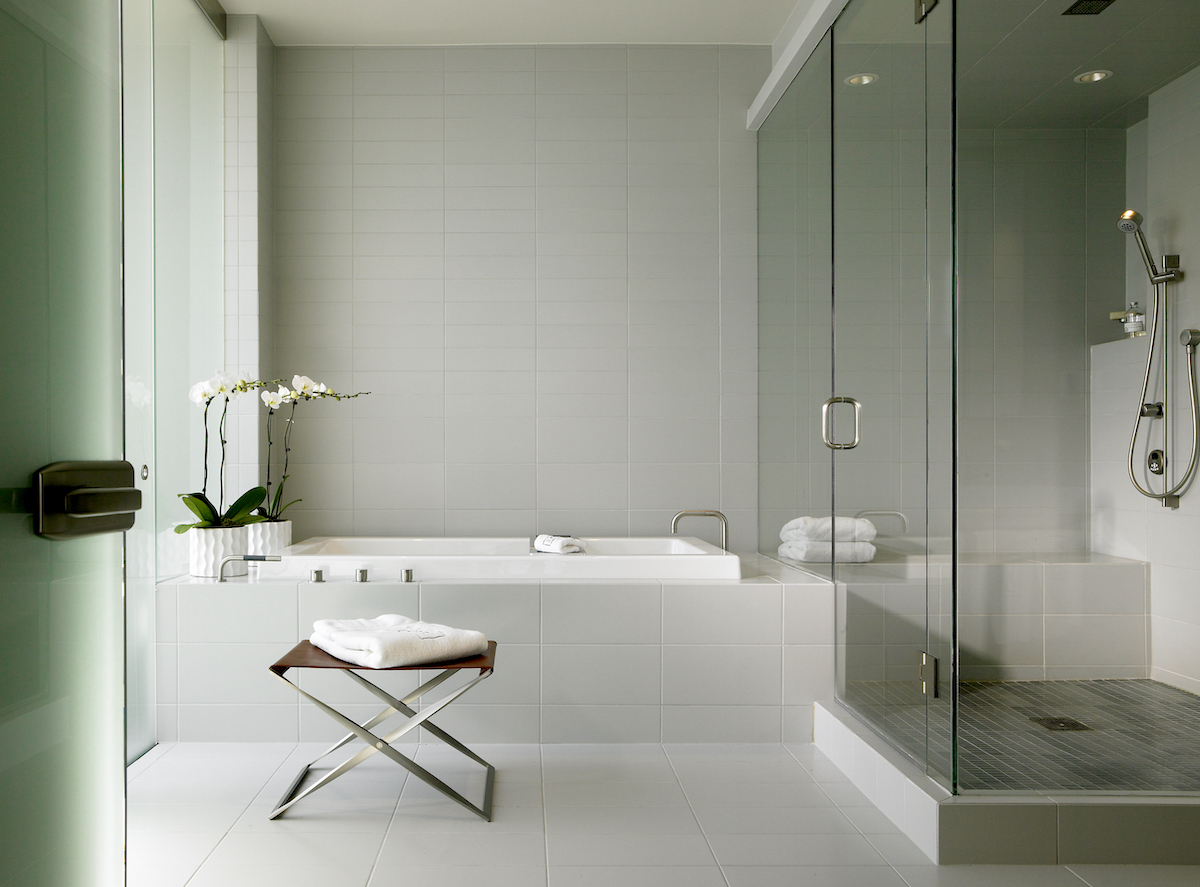



Dunne Residence
“Our client approached my firm after seeing several architectural and interior design projects we had recently completed for friends and associates. Their children were grown, living elsewhere, so their north suburban residence comprised of 10,000 square feet of living space was no longer needed. A decision was made to leave Chicago’s north shore and return to city living with easy access to the husband’s downtown office, the numerous upscale stores along Michigan Avenue, the museums and other cultural venues and the city’s myriad restaurants serving world class cuisine.
The search began for a residence that would provide the square footage on par with a single-family house. At the time, there was a 52-floor residential tower under construction in Chicago’s Gold Coast neighborhood. The 42nd floor of the tower provided open space with 5,000 square feet under roof plus two terraces. The floor to ceiling glass allowed for unobstructed views of Lake Michigan to the east and the city to the north and south.
A floor plan was developed with Paul Begnino, the project’s architect of record. I routinely consult with specialists in varying fields on all of my projects. With the continuing advancement in new material development and technology it’s virtually impossible for one to keep pace. From lighting design to “smart house technology” we assemble a team to lend their expertise and contribute to the success of the project.
After numerous design development sessions, an open floor plan was arrived at. The “public” rooms were located along the south exposure of the unit allowing for sweeping views of Chicago’s skyline and its architectural treasures. The “private” spaces, bedroom suites and library were situated along the north exposure of the apartment. The core connecting the public and private rooms was planned to provide a connecting gallery for display of the client’s extensive art collection along with closets, storage rooms and a laundry. So as to allow natural light to penetrate the core of the residence, floor to ceiling glass doors set on top and bottom pivots were used throughout. The glass was etched to provide privacy and the pivots eliminated the need for door casings and trim, maintaining the clean lines and minimalism that were key to the design concept.
The living room and adjoining media space embrace one of the terraces. Both spaces provide intimate seating groups, and their adjacency allows for easy flow when used for large gatherings. The kitchen and dining function, while open to the living spaces, is screened from view by a wall sheathed in African Green granite. The granite was “flamed” and when washed with light the mica flakes take on a shimmer. The same granite was used as the face of the living room fireplace.
The cook’s kitchen was designed for entertaining and was planned, so when viewed from the dining area, to have all of the appliances concealed from view except for the cook top. In keeping with the glass interior doors used throughout the interior, upper cabinets and back splashes at the sink are of glass reenforcing the concept of “lightness.”
The color palette was arrived at based on the exposure of the rooms. Varying shades of greens and grayed blues, cool tones, were used in the public rooms with east/south/west exposures. That color, when introduced in mass, takes on a neutral quality, color without it detracting from the art. For the private spaces on the north side of the residence, I introduced a warm palette of colors such as lemon/lime green in the library, deep gold and bronzes in the master suite and orange in a guest suite. When selecting tiles, stones and woods for the custom millwork and plank floors I opted for tonalities ranging from silver gray to a deep, rich coffee brown. Neutral tones that unify and visually anchor the interior.”
